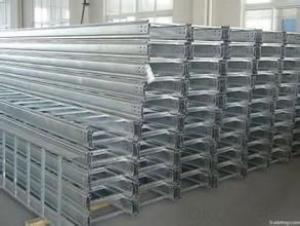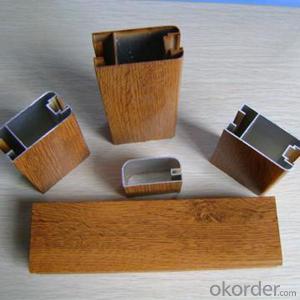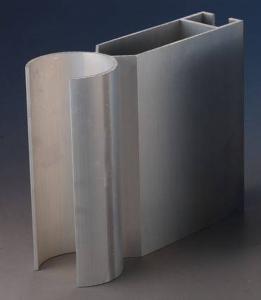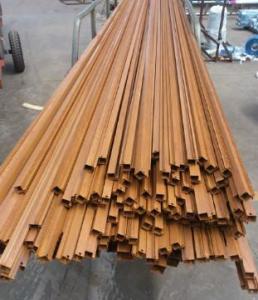Mill-Finished Aluminum Siding Trim Profiles - Hot Selling Aluminum Alloy Profile Extrusion
- Loading Port:
- Guangzhou
- Payment Terms:
- TT OR LC
- Min Order Qty:
- 5 m.t.
- Supply Capability:
- 10000 m.t./month
OKorder Service Pledge
OKorder Financial Service
You Might Also Like
Specification
1. Specification of Mill-finished Aluminum Alloy Profile Extrusion Hot Selling
Alloy | AA1050,AA1060, AA1070, AA1100 |
Temper: | H12, H14, H16, H18, H22, H24, H26, H32,HO, F |
Thickness: | 0.10-500mm |
Width: | 10mm- 2200mm |
Standard: | GB/T3880-2006, ASTM, ISO, EU standard |
Special Specification is available on customer’s requirement | |
2. Application of Mill-finished Aluminum Alloy Profile Extrusion Hot Selling
wall cladding, ceilings, bathrooms, kitchens and balconies, shutters, doors,windows…
3. Feature of Mill-finished Aluminum Alloy Profile Extrusion Hot Selling
Surface Quality :
Be free from Oil Stain, Dent, Inclusion, Scratches, Stain, Oxide Decoration, Breaks, Corrosion, Roll Marks, Dirt Streaks and other defect which will interfere with use,
Mochenical Property:
Chemical Composite and Mechanical Property
4. Certificate:
SGS and ROHS(if client request, paid by client), MTC(plant provided), Certificate of Origin(FORM A, FORM E, CO), Bureau Veritas and SGS (if client request, paid by client), CIQS certificate
5. Image of Mill-finished Aluminum Alloy Profile Extrusion Hot Selling

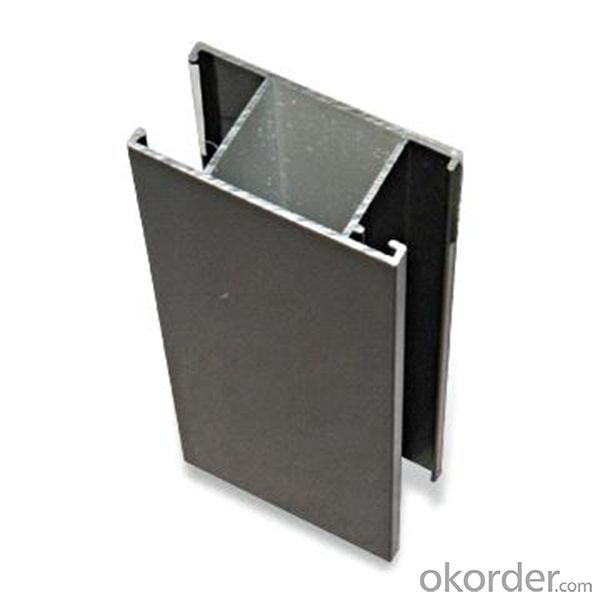
6. Package and shipping of Mill-finished Aluminum Alloy Profile Extrusion Hot Selling
First, plastic cloth with drying agent inside; Second, Pearl Wool; Third, wooden cases with dry agent, fumigation wooden pallets, aluminum surface could cover blue PVC film
7. FAQ
Question 1: What is your MOQ?
We accept one ton per type for an order. But the detail we could negotiate.
Question 2: What is your normal terms of payment?
We always trade with you by T/T. But we also accept the L/C as you require.
Question 3: How many kinds of the surface treatment we can choose?
You could choose different color of powder coated. Anodized of black. matte silver, nature, champagne, bronze color. Mill finished. Wooden finished and printed.etc.
Question 4: Can you supply OEM services?
We offer OEM services for 17 years.
Question 5: How many days for opening the mould?
Normally about 10 days.According to the difficulty of your drawing.
Question 6: Can i choose the package what i want?
Yes, of course. We offer various kinds of package.e.g.PE foam. Shrink film. Wrapping paper.
But we would give you professional suggestion of package.
- Q: What are the aluminum profile markets in Cangzhou, Renqiu?
- Aluminum market, located in Renqiu city in Yi Zhen Zhang Liu Zhuang industrial area, if you find a direct about Liu Zhuang industrial zone can be. Known as the North's largest aluminum production base, I look not so good
- Q: This question asks about the various types of insulation panels that utilize aluminum profiles in their construction.
- <p>Insulation panels made from aluminum profiles come in several types, each with specific characteristics and applications. These include: 1. Sandwich Panels, which consist of two aluminum sheets with a core material like polyurethane, rockwool, or polystyrene. 2. Composite Panels, which combine aluminum with other materials for enhanced properties. 3. Structural Insulated Panels (SIPs), used in construction for their thermal efficiency and strength. 4. Cold Storage Panels, designed to maintain low temperatures in refrigeration units. 5. Acoustic Insulation Panels, which reduce noise transfer. Each type is chosen based on the required thermal, acoustic, and structural performance.</p>
- Q: This question asks for methods to guarantee the safety and reliability of aluminum profile installations.
- <p>To ensure that the installation of aluminum profiles is safe and reliable, follow these steps: Use high-quality aluminum profiles that meet industry standards. Ensure proper measurements and accurate cuts to fit the profiles perfectly. Use appropriate fasteners and hardware that are compatible with aluminum. Ensure that all connections are secure and that the profiles are properly aligned. Check for any sharp edges or protrusions that could cause injury. Test the stability and load-bearing capacity of the installation to ensure it can handle the expected weight and stress. Regularly inspect and maintain the aluminum profiles to prevent any potential issues.</p>
- Q: 3030 aluminum profiles, can be used in outdoor snow exposure environment?
- This refers to the 3030 heavy aluminum profiles. General aluminum profile manufacturers will make a number of their own products,
- Q: How do aluminum profiles contribute to sustainable building practices?
- There are several reasons why aluminum profiles are crucial in promoting sustainable building practices. To begin with, aluminum is a material that can be recycled multiple times without any loss in quality. This recyclability significantly reduces the need for extracting and processing new aluminum, which is a process that consumes a lot of energy and harms the environment. By using aluminum profiles in construction, we can greatly reduce the demand for new aluminum production and thus conserve natural resources and decrease carbon emissions. In addition, aluminum profiles are both lightweight and strong, making them ideal for creating energy-efficient structures. Their lightweight nature reduces the load on the building's foundation and structural elements, resulting in lower material requirements and reduced construction costs. Furthermore, a lighter structure requires less energy for heating and cooling, leading to decreased energy consumption and reduced greenhouse gas emissions throughout the building's lifespan. Moreover, aluminum profiles have excellent thermal and acoustic insulation properties. When used correctly, they can contribute to the overall energy efficiency of a building by minimizing heat loss or gain through windows and doors. This means that less reliance is placed on artificial heating and cooling systems, resulting in decreased energy consumption and lower utility bills. Another advantage of aluminum profiles is their durability and low maintenance requirements. They are resistant to corrosion, weathering, and UV rays, which ensures a long lifespan and reduces the need for frequent replacements and repairs. This not only saves resources but also reduces waste generation and the use of landfills. Finally, aluminum profiles offer great design flexibility and can be easily incorporated into various architectural styles and designs. This versatility allows architects and builders to create structures that are both visually appealing and functional, while still adhering to sustainable building practices. In conclusion, aluminum profiles contribute to sustainable building practices by being recyclable, lightweight, energy-efficient, thermally insulating, durable, low maintenance, and versatile. By using aluminum profiles in construction projects, we can reduce our environmental impact, conserve natural resources, and promote a more sustainable future.
- Q: How do aluminum profiles perform in terms of static electricity discharge?
- Aluminum profiles possess exceptional properties for discharging static electricity. By virtue of their high electrical conductivity, aluminum profiles effectively dissipate static charges that might accumulate on their surface. This aids in the prevention of static electricity buildup, a matter of great significance in industries where electrostatic discharge can endanger sensitive electronic components or pose safety hazards. The conductivity of aluminum profiles facilitates the convenient grounding of any static charges, thereby ensuring a safe working environment. Additionally, aluminum profiles frequently find application in the construction of ESD protective equipment and structures, further underscoring their efficacy in managing static electricity. All in all, aluminum profiles offer utmost reliability in terms of static electricity discharge, rendering them a preferred choice in various industries necessitating static control.
- Q: Are aluminum profiles suitable for escalator handrails?
- Indeed, escalator handrails can be made from aluminum profiles. Aluminum is a material that is both lightweight and durable, and is frequently employed in a wide range of applications, one of which being escalator handrails. It boasts a remarkable ratio of strength to weight, is resistant to corrosion, and is capable of enduring substantial loads and continuous use. Moreover, aluminum profiles can be effortlessly molded and tailored to satisfy the precise demands of escalator handrails, ensuring a pleasant and ergonomic grip for individuals. All in all, due to their strength, durability, and adaptability, aluminum profiles are a dependable and appropriate option for escalator handrails.
- Q: What are the potential environmental effects linked to the utilization of aluminum profiles?
- <p>Yes, there are environmental impacts associated with using aluminum profiles. The production process consumes significant energy, contributing to greenhouse gas emissions. Aluminum production also generates waste, including red mud, which can be harmful if not properly managed. However, aluminum is recyclable, and recycling reduces energy consumption and waste generation. The environmental impact can be mitigated by using recycled aluminum and adopting sustainable production practices.</p>
- Q: Which is the highest price of aluminum profile 60616063?
- 6063 general construction profiles, that is industrial profiles
- Q: Can aluminum profiles be used in the production of medical devices?
- Yes, aluminum profiles can be used in the production of medical devices. Aluminum is a lightweight and highly versatile material that is commonly used in the healthcare industry due to its excellent strength-to-weight ratio, corrosion resistance, and ease of sterilization. It can be shaped into different profiles to meet the specific requirements of medical devices, making it a suitable choice for various applications such as surgical instruments, diagnostic equipment, and prosthetics.
Send your message to us
Mill-Finished Aluminum Siding Trim Profiles - Hot Selling Aluminum Alloy Profile Extrusion
- Loading Port:
- Guangzhou
- Payment Terms:
- TT OR LC
- Min Order Qty:
- 5 m.t.
- Supply Capability:
- 10000 m.t./month
OKorder Service Pledge
OKorder Financial Service
Similar products
Hot products
Hot Searches
Related keywords

